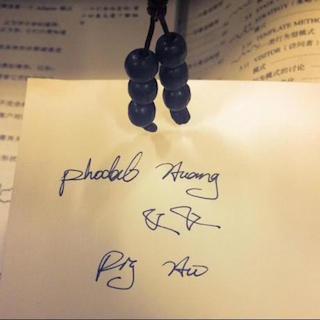markdown angular,网站重构四,angularjs insert html
因为再有的博客基本上是用markdown写的,所以需要将markdown写的博客转为html,再丢给angular处理。
Markdown
Markdown 是一种轻量级标记语言,创始人为约翰·格鲁伯(John Gruber)和亚伦·斯沃茨(Aaron Swartz)。它允许人们“使用易读易写的纯文本格式编写文档,然后转换成有效的XHTML(或者HTML)文档”。这种语言吸收了很多在电子邮件中已有的纯文本标记的特性。
安装markdown js
npm install markdown简单的用法就是如下面
var markdown = require( "markdown" ).markdown;
console.log( markdown.toHTML( "Hello *World*!" ) );所以我们要做的就是,声明下markdown,再添加到app.js中
content:markdown.toHTML(row.content),代码中添加了一个新的元素用于获取最后的十个博客,用的是underscore为的是以后方便,所以最后的app.js代码如下所示
var restify = require('restify');
var _ = require('underscore')._;
var sqlite3 = require('sqlite3').verbose();
var markdown = require( "markdown" ).markdown;
var db = new sqlite3.Database('sqlite3.db');
var server = restify.createServer();
var content = new Array();
server.use(
function crossOrigin(req,res,next){
res.header("Access-Control-Allow-Origin", "*");
res.header("Access-Control-Allow-Headers", "X-Requested-With");
return next();
}
);
db.all("SELECT id,content,title,description,slug,created,updated,publish_date,keywords_string FROM blog_blogpost", function(err, rows) {
rows.forEach(function (row) {
content.push({
id:row.id,
slug:row.slug,
description:row.description,
title:row.title,
content:markdown.toHTML(row.content),
keywords:row.keywords_string,
created:row.created,
updated:row.updated,
publish_date:row.publish_date
});
});
function respond(req,res,next){
var data = content[req.params.name-1];
res.json(data, {'content-type': 'application/json; charset=utf-8'});
}
function all(req,res,next){
var data = {blogposts_sum:rows.length};
res.json(data, {'content-type': 'application/json; charset=utf-8'});
}
function respages(req,res,next){
var data = _.last(content,10);
data = data.reverse();
res.json(data, {'content-type': 'application/json; charset=utf-8'});
}
server.get ('/blog',all);
server.get ('/blog/page/:page',respages);
server.head ('/blog/page/:page',respages);
server.get ('/blog/:name',respond);
server.head ('/blog/:name',respond);
db.close();
});
server.listen(10086, function() {
console.log('%s listening at %s', server.name, server.url);
});
Angularsjs 插入html
ng-bind-html这个指令要引入sanitize 模块
这里似乎需要用到trustAsHtml()这个神奇的东东,看看官方是怎样示例的 $sanitize
The input is sanitized by parsing the html into tokens. All safe tokens (from a whitelist) are then serialized back to properly escaped html string. This means that no unsafe input can make it into the returned string, however, since our parser is more strict than a typical browser parser, it's possible that some obscure input, which would be recognized as valid HTML by a browser, won't make it through the sanitizer.
看代码:
function Ctrl($scope, $sce) {
$scope.snippet =
'an html\n' +
'click here\n' +
'snippet
';
$scope.deliberatelyTrustDangerousSnippet = function() {
return $sce.trustAsHtml($scope.snippet);
};
}
以及HTML部分
<pre><div ng-bind-html="deliberatelyTrustDangerousSnippet()">整合
index.html部分
<!doctype html>
<html lang="en" ng-app="blogposts">
<head>
<meta charset="utf-8">
<title>Phodal's New Homepage</title>
<script src="js/angular.min.js"></script>
<script src="js/app.js"></script>
</head>
<body ng-controller="postlistCtrl">
<div class="container-fluid">
<div class="row-fluid">
<div class="span10">
<ul class="posts">
<article ng-repeat="post in posts">
<h1>{{post.title}}</h1>
<p>{{post.description}}</p>
</article>
<article>
<div ng-bind-html="deliberatelyTrustDangerousSnippet()"></div>
</article>
</ul>
</div>
</div>
</div>
</body>
</html>app.js部分
var blogposts = angular.module('blogposts', []);
blogposts.controller('postlistCtrl', function($scope, $http, $sce) {
$http.get('http://0.0.0.0:10086/blog/page/1').success(function(data) {
$scope.posts = data;
});
$http.get('http://0.0.0.0:10086/blog/1').success(function(data) {
$scope.post1 = data;
console.log(data.content);
$scope.deliberatelyTrustDangerousSnippet = function() {
return $sce.trustAsHtml(data.content);
};
});
});
或许您还需要下面的文章:
围观我的Github Idea墙, 也许,你会遇到心仪的项目
- Agentic UI:重新定义“好体验”——不是美化按钮,而是让认知负担归零
- Agentic 时代的前端革命:重塑 UI 为 AI 的执行界面
- AutoDev 3.0 → Xiuper:咻!全平台、全流程智能体编程平台
- AutoDev DocQL:Agentic RAG 下的结构化检索设计、实现与实验探索
- AI 代码审查再进化:AutoDev 多智能体协作架构深度解析
- AutoDev Code Review Agent:应对 10 倍代码量的 Agentic 代码审查
- 2025 AI 代码检视:以 ROI 为中心的 AI 代码检视体系与分级
- AutoDev CLI:构建 AI Agent 生成的 AI Agent 质量保障与验证架构
- Vibe Coding 何必只在桌面 IDE,编码智能体协同的思考与设计
- 多端编程 Agent(CLI/Desktop/Mobile):AutoDev 架构升级,欢迎一起参与演进
- opensuse (10)
- django (41)
- arduino (10)
- thoughtworks (18)
- centos (9)
- nginx (18)
- java (10)
- SEO (9)
- iot (47)
- iot system (12)
- RESTful (23)
- refactor (17)
- python (47)
- mezzanine (15)
- test (11)
- design (16)
- linux (14)
- tdd (12)
- ruby (14)
- github (24)
- git (10)
- javascript (52)
- android (36)
- jquery (18)
- rework (13)
- markdown (10)
- nodejs (24)
- google (8)
- code (9)
- macos (9)
- node (11)
- think (8)
- beageek (8)
- underscore (14)
- ux (8)
- microservices (10)
- rethink (9)
- architecture (37)
- backbone (19)
- mustache (9)
- requirejs (11)
- CoAP (21)
- aws (10)
- dsl (9)
- ionic (25)
- Cordova (21)
- angular (16)
- react (14)
- ddd (9)
- summary (9)
- growth (10)
- frontend (14)
- react native (8)
- serverless (32)
- rust (9)
- llm (8)

